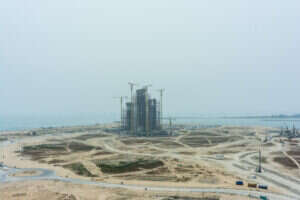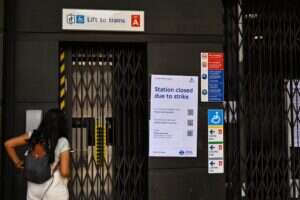As one door closes, another opens. In the same week as his plans for an airport island on the Thames were rejected by the Airports Commission, London mayor Boris Johnson has unveiled plans for two new cycling superhighways across London. Subject to public consultation, they could be completed as soon as May 2016.
The two routes, according to the Greater London Authority, would be the longest cycling superhighways in Europe. One will run for three miles, from King’s cross in the north to Elephant & Castle in the south; the other will run for 18 miles from Barking in the east to Acton in the west, swallowing the existing Cycle SuperHighway 3 from the City through Docklands, and taking over an entire lane of the Westway flyover. (We’ve included full route maps at the bottom of this post.) Once completed, these two will make Copenhagen’s 220m orange superhighway look like a tiny village lane by comparison.
So how did TfL figure out where to put 21 miles of cycle-only highways? For a start, planners found roads where traffic had fallen by around 25 per cent over the past decade. Then, they narrowed it down to roads with little residential parking and where TfL buses don’t currently operate. All this should minimise the impact of the new routes on existing road users.
The proposals also include fixes for other problematic sections of London’s cycling network. The segregated routes should give cyclists a safe path through dangerous junctions such as Tower Hill, Blackfriars, Parliament Square and Lancaster Gate (no mention of segregated lanes at other cycle injury hotspots at King’s Cross or Elephant, though).
There’s also a buried reference to improving the CS2 route to Stratford. Let’s hope this includes upgrading the cycle route through Bow interchange, a notoriously dangerous junction which is less “segregated bike lane” and more “a narrow blue stripe on road which stops mid-roundabout”:

This week’s plan isn’t just good news for bikes, either. It also includes the introduction of bus priority lanes, as well as new pedestrian areas at Parliament Square and Victoria Embankment. Here’s a mock-up of what the new layout at Victoria Embankment would look like:
%20(1).jpg)
So far, the plans seem to be going down well with cyclists, mostly because they actually offer fully segregated routes. Ashok Sinha, chief executive of the London Cycling Campaign, said:
“LCC is really pleased to see commitments to substantially reallocate carriageway space to ensure protected space for cycling – particularly on the east-west superhighway, where cyclists regularly make up almost half of traffic during the morning peak.”
He added, however, that the group has concerns about the width of the track and the safety of some junctions.
The new routes don’t cover the entire city, of course. Let’s hope this is a start, and not a conclusion.
Here’s a map of the East-West route:

And the North South route (the intersection with the E-W route is marked in pale blue stripes):







